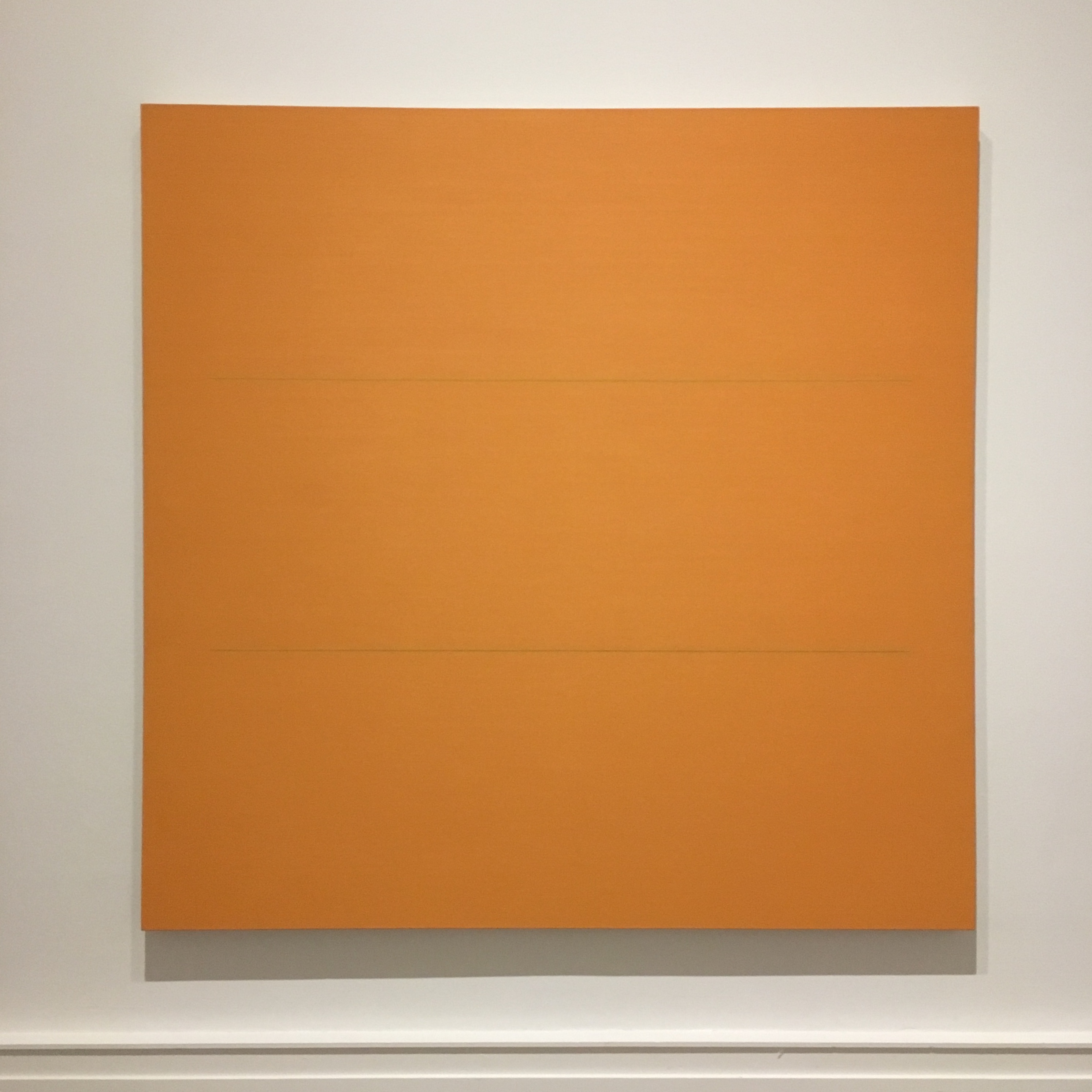Robert Irwin just might be the most famous artist you’ve never heard of. Now in his 90’s, he’s considered one of the top artists in the United States. I wrote a post about his book, Seeing is Forgetting the Name of the Thing One Sees, which was my favourite book of 2018.
Many of Irwin’s art projects have been temporary installations (outdoor and indoors) that interact with light and space. But he began his art career as a painter and the artist he became evolved from his explorations in painting. One of those explorations, over many years, had to do with lines. Recently, I experienced one of those paintings (see above) at the Albright-Knox Gallery in Buffalo, New York.
Early Lines (1957-1962)
Like many artists, Irwin began painting evocative landscapes, then moved on to abstract expressions. He became interested in the authenticity and emotional power of the spontaneous gesture. Willem de Kooning’s work especially inspired him in this area.
Later, Irwin began to question the whole idea of figure and ground in painting; he wanted to learn to see the canvas as one entire field. He began to see how figure and ground interpenetrated each other; how they were in relationship. The interactions are what creates energy and power. To Irwin, imagery was a representation of reality, while he wanted viewers to experience presence; to maximize energy and minimize imagery. Experimenting with the straight line seemed to be the best way to start.
At first his lines were very dense and figural. But, as he began to see figure and ground as a continuum, his lines became less figures occupying space and more energy with varying degrees of density. Objects became energy, while space moved from emptiness towards density. His lines became thinner and straighter and what took place between the lines took on more importance. However, he still wasn’t satisfied. His paintings still seemed to be “about” the lines.
Late Lines (1962-1964)
For the next two years, Irwin spent 12-15 hours a day, 7 days a week, painting two lines on a canvas. Many of these hours were spent just staring at the canvas. While staring, he noticed things he hadn’t seen before, his focus became more acute, and his concentration increased. Boredom became an important tool for identifying his own assumptions, aspirations, and ambitions. He wanted to let go of those and let the canvas tell him what to do.
“Renaissance man tells the world what he finds interesting and then tries to control it. I took to waiting for the world to tell me so that I could respond.” ~ Robert Irwin
The image above is one of the ten paintings Irwin created over this period. He used a bright orange paint as the ground, applied evenly over the canvas because orange is the most opaque colour. The two lines came from the same tube of paint. By moving a line even an eighth of an inch, he noticed that it changed everything, even the colour. There was no better or worse, just different. Even outside the canvas, a crack in the wall or the quality of light changed the experience of the painting. His question became where to place the lines for optimal effect.
What does it mean?
In two years, Irwin created 10 line paintings. They were meant to project neutrality. The lines were spaced such that both couldn’t be experienced simultaneously. There was more emphasis on the space between. They address questions of what it is to be in time and space; what it is to be present. For Irwin, their value and meaning was in what was discovered in their making and the finished canvases were incidental.
These experiments profoundly changed Irwin’s whole approach to art and led to more experiments. It was the beginning of his study of phenomenological perception, which he came to believe was the true act of art. Everything that followed fleshed out his discoveries during those late line years.
”All my activities after those line paintings are a result of how those paintings taught me to look at the world.” ~ Robert Irwin
Irwin made the subtle switch from focus to attention. For him, attention was a kind of floating feeling. Curiosity, rather than ambition, became his primary motivation. This period is when he finally grew up and became an artist.
